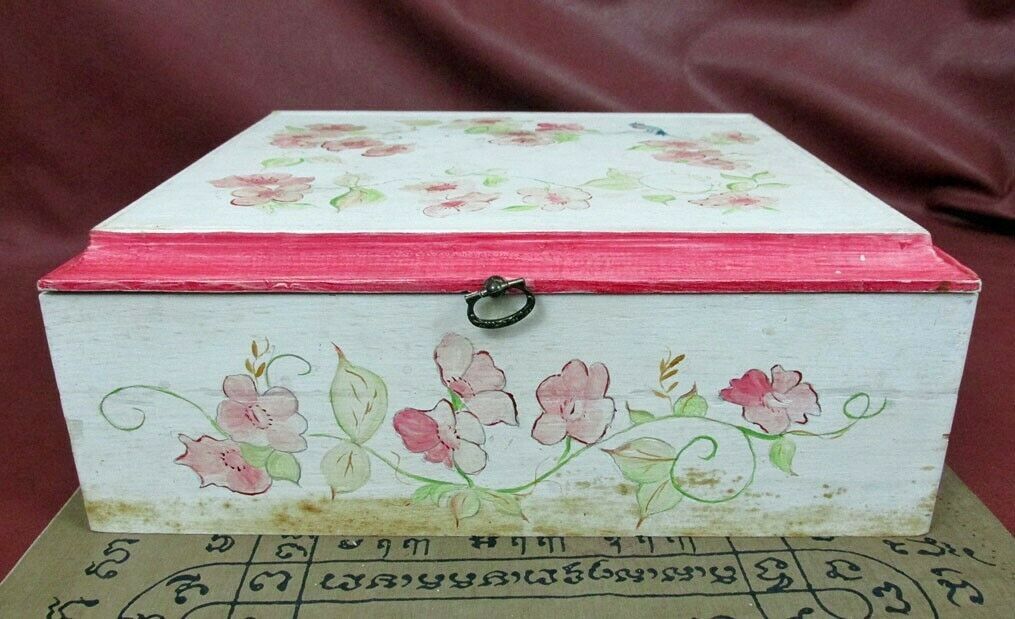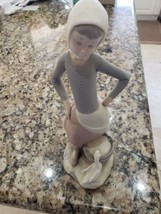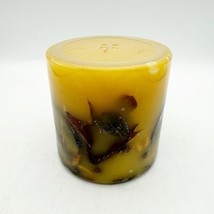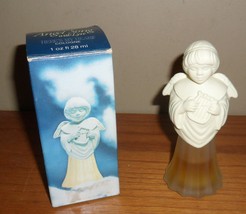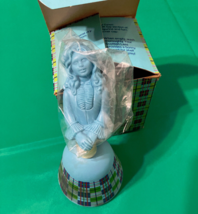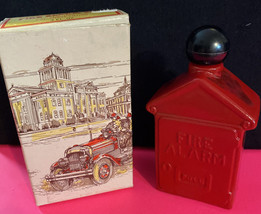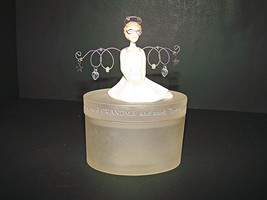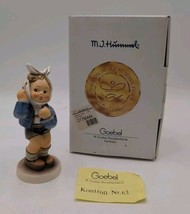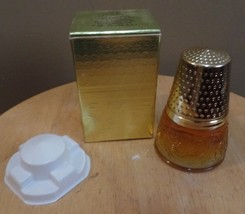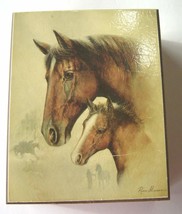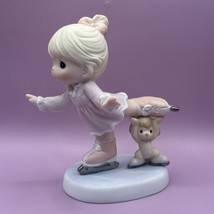Alice Rutledge's Rose Quartz Sex Magic Box and 50 similar items
Alice Rutledge's Rose Quartz Sex Magic Box Main Healing Altar Find Voodoo Estate
£4,136.71 GBP
View full item details »
Shipping options
Seller handling time is 1 business day Details
No shipping price specified to GB
Ships from
United States

Offer policy
OBO - Seller accepts offers on this item.
Details
Return policy
Purchase protection
Payment options
PayPal accepted
PayPal Credit accepted
Venmo accepted
PayPal, MasterCard, Visa, Discover, and American Express accepted
Maestro accepted
Amazon Pay accepted
Nuvei accepted
View full item details »
Shipping options
Seller handling time is 1 business day Details
No shipping price specified to GB
Ships from
United States

Offer policy
OBO - Seller accepts offers on this item.
Details
Return policy
Purchase protection
Payment options
PayPal accepted
PayPal Credit accepted
Venmo accepted
PayPal, MasterCard, Visa, Discover, and American Express accepted
Maestro accepted
Amazon Pay accepted
Nuvei accepted
Item traits
| Category: | |
|---|---|
| Quantity Available: |
Only one in stock, order soon |
| Condition: |
Used |
| Country/Region of Manufacture: |
United States |
| Type: |
Rose Quartz Sex Magic Box |
| Brand: |
The Voodoo Estate |
| Subject: |
Sex Magic Healing |
| Finish: |
Happy Endings |
| Collection: |
Rose Quartz |
| Color: |
Pink |
| Style: |
Americana |
| Features: |
Boxed/Carvings/Crystals/Gemstones/Hand Painted |
| Size: |
13" xz 10.5" x 5" |
| Pattern: |
Floral |
| Shape: |
Rectangle |
| Occasion: |
Healing |
| Time Period Manufactured: |
1960-1969 |
| Department: |
Adults |
| Original/Reproduction: |
Original |
| Custom Bundle: |
Yes |
Listing details
| Seller policies: | |
|---|---|
| Shipping discount: |
Shipping weights of all items added together for savings. |
| Posted for sale: |
More than a week ago |
| Item number: |
1171562273 |
Item description
~ Voodoo Priestess Estate ~
Alice Rutledge's Rose Quartz Healing Sex Magic Box
A Main Healing Altar Find
~:~
It has now been nearly twenty years ago since we were called to do an estate that had been closed up for seventeen years!
The Voodoo Estate!
This type of call usually gets us excited as they are a treasure trove. Located here in Florida, there was no electricity or running water so we rigged our own lighting and in we went. If you have ever seen the Adams Family you will have some idea as to what we were greeted with! Then the attorney handling the liquidation gave us some background. The estate had belonged to an alleged powerful Voodoo Priestess/JooJoo Exorcist, grand daughter of a Marie Laveau, and favored daughter of a Marie Glapion. These names meant nothing to us, but the late night talk of Voodoo and exorcism in the old mansion did cause some uneasy feelings so we decided to spend the night in a hotel and return in the morning to assess the estate. The rest is history.
Our research has shown that this woman was what she claimed and was indeed descended from a long line of well known Vodoun family originating in New Orleans in the early 1800's. We were pretty unnerved by this until we discovered they were also devout Catholics! Although I have to admit this was unlike any Catholic home we have ever been in, yet some of the items found inside were a little more than unnerving. There was no feeling of dread or unwelcome in the mansion, however there was quite a bit of contraband and other items we can or will not sell here.
This is one of a few pieces from this estate we will be listing this week, so check our other listings.
We will, upon the new guardian's request, issue a named Letter of Authenticity with each piece from this estate, complying with the terms set forth to us by the estate's attorney.
Some Back Story
This is one of the "seven mineral specific ritual spell boxes" named in her inventory which we recovered from the Main Altar of Healing. They were assembled by a committee headed up by the woman they refer to as "Go Ask Alice" or Alice for short!
The Main Altar of Healing
This Main Altar of Healing was what amounted to a small infirmary...of sorts. A Cabinet of Curiosities in its own right, that was located in the east facing porched hall on the first floor. It contained many unusual artifacts with alleged healing attributes, this Rose Quartz Ritual Spell Box among them!
She does indeed record some dramatic, if not always successful treatments that they performed. Although, we must add, her record of successful treatment, although bizarre to many, had better than a 90% cure ratio, which, if true, is rather impressive.
This box is named in her inventory with some history of it's creator, Emma Alice “Alice” Douglas Rutledge, who is named as a trusted nanny, witch, diviner, psychic and granddaughter of Mountain Mary, who was known to her from infancy and also known to those who frequented this estate as "Alice" and "Go Ask Alice."
Other than scheduling and payroll entries, there is little more to be gained from the ledgers we recovered concerning Alice.
Go Ask Alice
Our own research revealed Alice's obituary on FindAGrave.com;
Emma Alice “Alice” Douglas Rutledge
BIRTH 25 Nov 1887
DEATH 3 Apr 1971 (aged 83)
BURIAL
Baptist Church Cemetery
Immokalee, Collier County, Florida, USA
MEMORIAL ID 63254001 · View Source
MEMORIAL
PHOTOS 2
FLOWERS 0
Alice E. Rutledge was survived by sons, Dan Rutledge, Arcadia, and Homer Lee Rutledge; daughters, Mrs. Emily Dupree, Mrs. Annie Dupree, Mrs. Ruth Phillips, Mrs. Mamie Dupree, Immokalee, Mrs. Genevieve Nimic, Miami; 22 grandchildren and several great-grandchildren. Funeral services at Friendship Baptist Church, Immokalee, with Rev. Kline Williams officiating. Burial in Baptist Cemetery. Arrangements by Leo W. Engelhardt.
Family Members
Parents; Sarah Ann Summerall Cochran (1864–1949)
Spouses; Elem Bruce Alderman (1884–1920)
James Andrew Rutledge (1889–1966)
Siblings; Edward Dallas Douglas* (1885–1968)
Sebie Sampson Douglas* (1890–1943)
Cullie Douglas* (1894–1980)
James Riley Douglas* (1897–1972)
Allen Douglas* (1900–1975)
Nettie Frances Douglas Thigpen* (1905–1980)
Readie Douglas Taylor* (1908–1963)
Children; Mamie Margaret Alderman Dupree* (1907–1995)
Ruth Ann Alderman Phillips* (1911–1975)
Annie Josephine Rutledge Dupree* (1914–1989)
Seeburn Daniel Rutledge* (1917–1988)
Homer Lee Rutledge* (1922–1998)
Emma Lee Rutledge Dupree* (1927–2016)
*Calculated Relationship
~!~
In piecing together her journals, she tells a tale of the original American (1701) LiDiex and four of his sons traveling to the west in the late 1700's seeking natural deposits of silver and gold while making contact with the Natives to study their religious practices and establish trade. Although there is much more to their story, what pertains here is Alice being the granddaughter of Mountain Mary and of being the "maker and author of magic of this box."
~!~
The LiDiex
The research involved in this estate provides continuous fascination. The LiDiex, were a multi-generational group of men known only as, "LiDiex" Their history in this country and to this estate dates back to 1701 when the first of them touched shore as a survivor and alleged saboteur of the slave Ship Henrietta Marie. It is said he facilitated this disaster using egg shells, and certain folklore concerning egg shells corroborate this.
He then found his way to New Orleans to meet with the parents of the then infant grandmother of our priestess, Marie Laveau, and took up trade as a wood carver and furniture maker as would many of his descendants.
Their journals make claim that the father of the above mentioned 1701 LiDiex, "had been the Mullah to a Hui leader, a dealer in magic. A political and military adviser who fell out of favor at court" and was later executed. His family was sold into slavery to Arab traders and in turn to white slave traders, which started the ill fated voyage that brought him to these shores.
In these journals it is alleged the father was born in the early 1500's and that he was executed just after his 178th. birthday!
Her journals note of many of the LiDiex as, "a skilled sorcerer, tactician, warrior, and, artist" who were all deeply involved in her works.
~!~
Mountain Mary's Sacred Oak
Their journey west took at an odd route that had them outfitting in New York, New Jersey and Pennsylvania. One of their first encounters was in Berks County, Pennsylvania where they spent over a year putting together comprehensive notes and collecting artifacts on what were called, "powwowers." They made contact and friends with what may be the most famous of these medicine women, known as "Mountain Mary" to the English or, "Die Berg Maria" to the locals. They tell us her real name was Anna Maria Jung.
Her home was in the Oley Hills near Hill Church, and still stands today. A well known healer, herbalist, and early nutritionist whose book of spells was her Bible. She was well known as a holy woman, and the first census in the late 1700’s lists her as an Abbess, indicating she had religious followers, or a church of her own.
~!~
It was Mountain Mary who led them to the Sacred Oak tree which was the source wood for "The Magic Money Reap Spell Box" which we used successfully and passed along to another years ago. The tree also still stands today in a grove of trees just off Friedensburg Road in the Oley Valley, of Pennsylvania. It is a Chinkapin Oak that is over 500 years old that is steeped in Native American folklore. Their journals tell us the source wood was taken from a dead part of the tree and that no harm was done to it.
They stayed at Mary's home in the Oley Valley for 13 months exchanging information, and, "comparing the use of the Bible for magic incantations in the manner of Thascius Caecilius Cyprianus." These were techniques already known to them and handed down from the father of the 1701 LiDiex.
~!~
Their 13 month study complete, they sent their collection of artifacts back to New Orleans where the uncut log of the Sacred Oak remained and mention of it does not appear again until 1883 where entries in the LiDiex journals tell of the manufacture of a, "brauche spelled box of reaping" (the Magic Money Reap Spell Box).
In 1884, the box was completed and its first use by the LiDiex family is noted as successful in 1885. It should be noted, that they had amassed a fortune in gold, silver and oil trading shortly after that, all attributed to the use of that box. We found no journal mention of the box again until 1916, when they mention the return of the box.
They apparently sold or gave the box away twice during that time, but it failed to deliver wealth to either owner and they gratefully returned it to them as, "cursed."
But that was that box, and this is this one, so...
Back to this Box
Her journals tell us Alice made her boxes to be used in divinations and spell casting while she was alive and well after her death! She instructed their clients to write letters of petition which she would leave in a box which would be answered by the spirit(s) of that particular box. Whether "guided by the spirit(s) of the box," or their intervening on the client's behalf, her boxes she would answer in kind, reading them together during a future session with the client, "after the spirits had intervened and answered."
"Oft the healing, emotional, and financial needs are addressed by the spirits," according to one journal entry.
A fairly common noted occurrence with these boxes was an envelope with cash alleged to have been a spirit response. On the face of it, it seems to make sense that the responder would have placed an envelope containing money in the box for a needy client, but they claim this is not the case, but that it was indeed, "spirit money" that had been left for them, which would be in keeping with the folklore surrounding her ancestor, "Mountain Mary and her Magic Money Reap Spell Box".
~!~
Examination of the box reveals a handmade, whitewashed wood box, which is said to have been made from wood salvaged from a lightning struck estate pine tree. It is hand painted in a pink bougainvillea motif. by Alice and it is also noted that Alice was responsible for much of the bougainvillea found on this estate and its secondary properties. These strains still exist today on our own properties as we took cuttings from the estate and they propagated well over the years.
The box is signed and dated, "Hand Made by Alice Rutledge 1965" and measures approximately 13" x 10 1/2" x 5".
~!~
The Box Contents and Commentary
~!~
Just as others before and after her, Alice was able to express herself with a rich palette of eclectic items provided by those associated with this estate.
Uncle Khoo's Ma Saep Nang, Phra Sant Yant, Sex Dream Ritual Cloth
Her journals and inventory tell us this is a, "Ma Saep Nang Phra Sant Yant Sex Dream Ritual Cloth," one of a group given to her by Uncle Khoo, in a 1947 dated entry.
~!~
Uncle Khoo
Her journals tell us of her being introduced to the attending monks of a close friend's funeral in Thailand in 1941 (the Khattiya Monk). Their apparent senior member introducing himself as, "Uncle Khoo." Through her interpreter he was introduced to her as, ‘Tok Raja’ who told her the Khattiya Monk's name was Balin Dith (her above mentioned friend), a Khmer who had saved his life in the jungle many years ago and had kept his promise of visiting him (Tok Raja) in Malaysia which he had done for the last time, days before his death. She too was asked to promise to visit him in Malaysia, a promise her journals tell us she did fulfill three times prior to her own death.
Her journals do not add any information concerning this famous Thai, Chief Abbot of the Kelantan state of Malaysia, that is no already readily available, so there is no need for us to further burden this text with what you should research on your own.
Her journals tell us it was five years later that she returned to Malaysia to visit her Uncle Khoo.
Among the items she brought back from this visit were four ritual vests and six of these yant cloths which were personally blessed and given to her by Uncle Khoo as parting gifts.
~!~
Ma Saep Nang Phra Sant Yant Sex Dream Ritual Cloth
This is an original version of these sex ritual cloths, made by an unknown sorcerer monk sometime in the early 1940's. It is an old depiction that is often copied and still sold today, but few, if any of the vendor's who have them are able to provide correct information as to the maker monk, their associated temple or Ma Saep Nang!
Our research leads us to believe the imagery is a Burmese, or Malaysian rendition of original Khmer origin made by a Thai or Cambodian refugee monk or Lersi.
~!~
This is a sacred Pha Yant Mah Saep Nang cloth which is considered one of the most powerful love amulets ever created. It is a sacred-charm cloth amulet with many alleged attributes but foremost known for its ability to increase sex appeal and convert enemies into friends. Its main theme of a stallion having sexual intercourse with a young maiden is supposed to be obviously synonymous with the power of sex appeal. It is a very powerful and highly potent symbol of sexual prowess and masculinity in Thailand. The cloth is also covered with sacred spells to increase the power of the cloth amulet.
These cloths were created in strict accordance with ancient sciences. They are made from the shrouds used to cover the deceased prior to cremation. According to the Thai belief, the spirit of those that die may possibly depart the cadaver and possess those that attempt to remove the cloth. The attending monk(s) employ powerful spells to ensure the departed soul becomes a positive force for the good of helping worshippers of the sacred cloth yants and not harming them!
This has always been an obscure and arcane practice, and today, very few monks create this type of charm amulet because the knowledge of how to do so is quickly dying as each generation passes. These cloths are believed by many to possess miraculous power and are attributed as the most powerful of all love charms.
Her journals tell us she would use these, “over the pillows and under the pillowcases and, or place them under the sheets, mattress or bed for multiple blessings for relationships such as, love, sex appeal, fertility, charm, success and good fortune. There are numerous Akara (spells) surrounding the core theme of one of the most potent symbols of sexual prowess and masculinity, Maa Saep Nang, the young female being f***** silly by horse c****.” (although this imagery is powerful it is not meant to be taken literally)
The exact history of the Ma Saep Nang Maha Sanae Wicha (Charm Magic) is not known but many scholars have evidence to suggest that it first originated in Burma and initially established itself in the Lanna kingdom of Thailand. Little is ever mentioned about Burmese magic but it is thought to be equally as powerful as the much publicized Khmer magic. It is known that Burmese kings imported large numbers of Sanskrit texts from India on topics such as medicine, alchemy, incantation, sex and astrology. In Burma, these Buddhist wizards are practitioners of what is called the weikza-lam (path of occult knowledge).
This tradition still exists today in Burma, and the largest of the groups practicing this occult path is based in the city of Pegy, and is called the Manosetopad Gaing. Like their Thai counterparts, this organization bases an interest in the occult on the powers attained by the Buddha on the path to enlightenment. They also believe that the relics of the Buddha (Burmese dat-daw) (Pali dhatu) are possessed of a kind of majestic power that he infused in them through the force of his samadhi. It is clear from reading many of the ancient texts that the Burmese magic is based on a much older tradition of Spirit religions and animistic world views
In fact Ma Saep Nang is only one of a series of four related (Sut Yot Sanae) images that comprise the original Maha Sanae wicha, the others being, Nang Song Wua Saep, (two bulls and female), Sam Noo Gin Nam Nom Meaw (three rats/mice drinking cats milk) this Maha Sanae Wicha was made famous by Ajahn Chum Chaikiri, and finally See Wua Gin Nam Nom Seua (four cows drinking tigers milk).
According to the popular legend of this magic a family that had a very beautiful daughter was made responsible for tending to a prime specimen male horse on a daily basis. She eventually becomes very attached to the horse and actually falls in love and has a sexual encounter. Her father who learns of this is so ashamed he kills the horse. The end result is a dead heart for the young girl. Essentially the Maa Saep Nang magic and yants are associated with strong and powerful lust and attraction.
One of her journal entries gives us this sacred spell or Khata to chant over these cloths;
Ohm Nang Kuwk Nang Gwang Kwang
Gwang Ao Sao Mar Ner Nang Ner
Mar Raew Mar Ruk Gun Roi Mern Ter
San Wun Gor Hai Mar Har Koo Ner Nang
Hark Yoo Fark Far Gor Hai Mar Har Koo Ner Nang Ner Nang
Hark Yoo Lai Mair Num Kun San Wung Gor Hai Lan Mar Har Koo Ner Nang Ner Nang
And goes on to tell us, “if you decide to walk this path you must fill you mind with nothing other then thoughts of the Three Jewels. This will generate loving kindness toward the various grades of nats (here she refers to powerful nature spirits dwelling in trees, the earth, and mountains, the minor deities who preside over the use of magical incantations and diagrams, and medicine spirits whose domain includes the well-known herbs and minerals of alchemical lore).
~!!~
Some other entries warn of, "the uninitiated using the cloth during seduction or sexual intercourse. This has led to painful, long lasting erections in the male and nymphomania in the female."
~!~
Yant Magic
Our own research has shown all Yant, fall into the amulet category known as Kruang Reang i.e. Objects of Magic. These are sacred images of high age from past guru masters that are highly collectible and can command a high price on today’s market. The symbolism they display are usually seen as tattoos known as Sak Yant, of the Khmer Sorcerer Monks, Muay Tai fighters, mixed martial artists and some celebrities today. When this intricate script is written on cloth it is known as 'Phra Yant'. It is also etched on the soft metals used in Takrut's and on the many Thai amulets.
The word Yant itself comes from the old the Sanskrit meaning, 'a sacred geometrical design' and is usually accompanied with a written Khom script or set of characters which are linked to the prayer or katha. The script is a combination of Khom, Thai and the Sanskrit language, which is a style of early Khmer wicha magic that has been adopted by Buddhist monks and Ajarns (civilian Brahmins) of Thailand, Cambodia, Laos and Malaysia.
In its form as a tattoo, (Sak Yant) it is much more than a fashion statement. It is intrinsically linked to Buddha, Buddhist precepts and the guru master who created it. The worshipper must truly believe and follow any instructions, as it is said the embedded wicha power may vanish if the are not followed.
Each design is unique in meaning and purpose as crafted by its maker, but follows a common theme such as bringing good luck and fortune, protection from harm and accidents, warding off evil spirits, love and attraction, power and success, great fighter, great lover, great talker etc.
In any of its forms, the sorcerer monk will chant his own form of incantation spell and ancient katha chant, at some point during the end of the process of making the yant, which concludes with Pao Katha, a blowing of the masters breath across the article to bind and activate the magical formula.
~!~
Her journals tell us one of Uncle Khoo's Phra Pidta amulets were given to one of her associates (1898 LiDiex) prior to his U.S Army deployment to the Pacific during World War II. In one of his journal entries he tells of being shot in the face and stomach at point blank range by a pair of Japanese soldiers, the bullets falling to the ground after bouncing off of him. He attributes his amulet Phra Pidta with saving his life. The Japanese soldiers did not fare as well. He was not wearing the amulets the day he was killed.
Similar stories abound in Thai and Malaysian police files and military veteran testimony. Although early police files indicate the criminal, wearing or carrying a Phra Yant was attributed with invulnerability, speed, and/or invisibility, it did not take the police officers long to catch on. More often than not, they carry them today!
All of this is a fascinating study of the cultural magic practiced in Thailand that we wholeheartedly recommend you research further.
~!!~
But Back to the Cloth
It does not appear to have ever been used, but rather stored by lining the box for all of these years. It is in excellent overall condition with no damage, stains, repairs, etc.
The cloth measures approximately 14 3/4" x 20 1/2"!
~!~
Bali Sterling Silver and Brazilian Shaman's Rose Quartz
The vast majority of the items in this box are made from Brazilian Shaman's Rose Quartz and two sources of Bali Sterling Silver.
More often than not, her metal of choice was silver as she notes, "Silver is the mirror of the soul related to the moon energies. It strengthens connections of the astral and physical bodies. A metal unmatched in its psychic energies and healing abilities, I have used it as a spell medium, to heal the speech impaired and to help public speakers achieve eloquence. Induced into the drink, it has expelled the toxins that caused headaches, arthritis, intestinal and blood disorders. More importantly it attracts, enhances and stores energies of gemstones, driving out negative energies the stone may have absorbed."
She tells us of the two main sources of silver she chose for these items;
~!~
Sanur Pandai Sudra Sterling Silver
The LiDiex journals tell of their dealings with a family of, “Sanur Pandai Sudra” over a four year period of 1957 through 1961. Some of these entries read, “a family of traditional Balinese smiths and sorcerers, descended from a long line of craftsman sorcerers of Sanur. They are in possession of authentic, ancient Hindu lontars, (Holy inscriptions written on the leaves of the lontar palm) that tell of the mythical history of their arts.”
“They are known locally as pande mas, trained by the Gods."
“Although they are low caste sudra, they are sought out for their work in silver, gold and sorcery. They claim to be direct descendants of Brahma.”
The word 'pandai' means both 'smith' and 'clever'.
Their journal and inventory entries attribute the silver they obtained from these, "Sanur Pandai Sudra.”
~*~
Brazilian Shaman's Rose Quartz
Her journals and inventory also tells us the rose quartz carvings and beads were cut from rose quartz specimen obtained during her 1962 Brazilian Shaman artifact hunt.
Although she does not name them in her notes she solicited a handful of Brazilian holy men, healers, sorcerers and seers to act as guides to her party, and relinquish some of their precious finds usually in trade for guns.
She does write of this particular sourced batch of rose quartz as having a wide range of metaphysical healing properties. She also writes, "this was a rare and powerful source of this versatile crystal. They have proven to be excellent healers of emotional wounds, their positive energies bringing inner peace and an opening of the heart, so needed to reduce the resentments harbored in love relationships gone bad. My clients have experienced a rise in their self esteem and worth and have learned to love and trust again from the calming of their emotional spirit caused from exposure to these energies. They have proved quite helpful in healing during a period of loss, restoring balance and serenity so needed to deal with reactions from fear, anger, resentment and grief."
"Here is a stone whose energy directly relates to the heart chakra. As such, it is often used as a healing stone for the heart, both physically and emotionally. It brings comfort and eases depression and stress that are often the underlying cause of migraine headaches and addictions. I often couple it with amethyst for healing."
~!~
Divinations of Six and Three Votive Candle Holders
Their journals describe a form of preventative healing divination involving three and six of the rose quartz votive candles in these rose quartz holders. A ritual which they often refer to as Roku-san.
Here was a term we were familiar with as Roku-san is a form of Onmyo Taoist Astrology. Essentially, Roku-san is a method of calculation referring to one or two digits of your body’s nine areas called Hoshi-atari which are related to the nine traditional astrological signs in Onmyodo, each corresponding to the year of a person’s birth and used to create a horoscope that are labeled in numbers from one to nine. When you divide your age by nine, the resulting numbers according to the diagram of your sex is where you are in danger of injuring the same year when you did the calculation. For example, when I divide the age of 24 with 9, the result is 3 (when rounding up the original result of 2.6666). Now, when I compare my result with a male diagram of Hoshi-atari, they need to be cautious about their left knee this year for that’s where the number 3 is located!
These results are brought to the shrine to receive “protective rituals of purification."
In the Sado Island of Niigata Prefecture, there’s a tradition called “Roku-sanno-toshi-yoke” where locals would buy a block of Tofu then hang it down in the bathroom's ceiling by a rope and seek out a Yamabushi (Shungendo priest) for the ritual.
While in Togura Town of Nagano Prefecture, there are stones at each side of Kashiwaiwa Temple’s entrance both called Rokusan-iwa where the one installed towards South is a male stone and the other one towards North is a female stone, conceptually similar to the En-musubi Stones in Kuzuharaoka Shrine (Kamakura City, Kanagawa Prefecture). In the past, locals would offer a serving of rice porridge three times to the specific sex of stone stelle, as male locals offered to the female stone while the female locals offered to the male stone.
Sourced from: “Saishi-shuzoku-jiten (New Edition)” 2018, by Kunio Yanagita (1875 - 1962)
~!~
How this was performed and what was chanted remains a mystery however due to damaged and missing ledgers. She does tell us that pink (of course) votive candles were used. She also tells us these were cut for her in Mexico shortly after her return in 1962.
The bottom of each of these has a piece of pink felt glued on to protect surfaces and this shows little to no wear or staining, indication to us that they were rarely used.
Each measures approximately 3.5" x 3.5" x 3", and weighs 2lbs.
~!~
The Pair of Carved Lotus Cone Incense Burners
Her journals and inventory also tells us these rose quartz lotus carvings were cut from specimen obtained during the 1962 Brazilian Shaman artifact hunt. Although we thought they were meant to hold tapers, she tells us they are cone incense burners.
Each measures approximately 2 1/8" in diameter x 1" in height and weighs 61.1 grams.
~!~
Rose Quartz Phallus
Her journals and inventory tell us the large rose quartz phallus was custom made for her in Mexico by an unnamed maker in 1929 and it was given to Alice in 1958.
It was originally made as a companion piece to a board game recovered from her Main Guest Boudoir. This was a luxurious suite where she was known entertain intimate overnight guests.
The Game
The game board and play were an erotic parody of the Victorian Mansion of Happiness Game. The play and instructions were hand written in elaborate greeting cards that directed the players along an interactive erotic ceremonial game play that; "was enjoyed by all" according to the inventory entry she had made of the game.
The cards progressed the game play through a series of numbers obtained from the casting of dice.
When found, the game contained 110 of the called for game pieces. These pieces were suggestive in themselves and corresponded with the directions of play. All were hand carved from an assortment of quartz, rose quartz, amethyst, sodalite, lapis lazuli, carnelian, hematite and poppy jasper.
In our own inventory of the game and its pieces "The Crop of C***s" were missing and the game was sold nineteen years ago without them.
The 'Crop of C***s' game pieces were 20 small and four large gemstone phallus that were harvested by the player during the game and used in a more than suggestive manner with themselves and partners in play.
The game fit into a large, elaborate fitted wood case and the series of instructional cards dated to 1901.
According to her journaled inventory, the game came into her possession as a Christmas gift in 1929 from the LiDiex and it is believed they had a hand in its making.
~!~
These Phallus'
We unpacked this box from Uncle Waddy's Collection about three years ago, which sent us scrambling to retrieve the notes and ledger entries she left for us, having archived them years ago, thinking this box was an early unrecorded sale or lost to the ages.
Uncle Waddy and Chris spent those first nights at the estate, looting it, of which they still tell a rather exciting tale in itself, but that is, another story and not really related to these pieces. Suffice to say, no one knew, or cared that they had helped themselves which according to my records, actually happened before we took possession, hmmmm.
Here are the large and small rose quartz Crock of C***s phallus' from her Mansion of Happiness game.
Our initial assessment of these left no source of stone mentioned for them, but upon the latest search, after recovering this box from Uncle Waddy's collection which also revealed a few missing journal ledgers, and in these, the phallus are attributed to the rose quartz of Brazil, 1962.
Her notes also mention, "these boudoir game pieces are used for their extreme grounding power which allows present time awareness, useful for focusing on issues at hand."
Another journal entry concerning these items read; "connected to the body's center, it stimulates creative, emotional sexual energies within all five senses allowing a greater appreciation for one's body and sexuality with friends or lovers without guilt."
~!~
These are cut from lapidary grade rose quartz with some gemmy areas. They are of fine cut and polish. They display translucent to semi-transparent and it have a medium natural pink color.
The Big Boy measures approximately 7 5/8" in length x 2 9/16" x 2 7/16" at the base and weighing 1 lb., 12 oz., while its three little brethren measure approximately 1 9/16" in length x 5/8" x 5/8" at the base and weigh 7.2 grams each.
~!~
Bali Sterling Silver and Brazilian Shaman's Rose Quartz, 108 Count, Khun Paen Japa Mala
Her journals and inventory attribute this set of prayer beads as being custom made for Alice's Rose Quartz Box.
Using prayer beads as a meditation and invocation tool is a practice as old as mankind so it is no coincidence that they are found in use in almost every religion. They are known to have physical, metaphysical and psychological effects on their users. The beads are fingered in an automatic manner which allows one to keep track of how many prayers have been said with a minimum of conscious effort, which allows attention to be paid to the prayers, mantras or spells themselves.
There are three widely accepted uses for Prayer beads. Repetition of the same devotional set, usually a large number of times. Repetition of several different prayers in a pattern, interspersed with or accompanied by meditations and focus on a series of spiritual themes, as in Islam or Catholicism.
Prayer beads of precious and semiprecious stones have been made since ancient times with many having gained a special meaning for that culture. The earliest form of prayer beads are, "Japa Mala" or mala, which translates from the Sanskrit as, "garland." These are usually made with 108 or other number of beads divisible by nine.
Worn and carried with ceremonial garb it's use for keeping count while reciting, chanting, or mentally repeating a mantra, deity name(s) or spell incantation in repetition.
This practice is known in Sanskrit as japa, hence, Japa Mala.
~!~
The Mala Components and Minor Commentary
Sanur Pandai Sudra Sterling Silver
Their journal and inventory entries attribute the ten assorted sterling silver beads used in this japa-mala as being obtained from these, "Sanur Pandai Sudra.”
Unmarked, all test as .925 Sterling Silver Standard
~!~
Brazilian Shaman's Rose Quartz
Her journals and inventory also tell us the one hundred and eight, 12.7 mm round rose quartz beads used in this japa-mala were cut from rose quartz specimen obtained during her 1962 Brazilian Shaman artifact hunt.
The beads are of fine grind, polish and pale pink color.\
~!!~
The Khattiya Monk's Muay Korat Mortified Buffalo Leather Nam Man Prai
"Bound Khun Paen, Very Strong Charm"
Her journaled inventory goes on to tell us the Khun Paen amulet that serves as Guru to this japa mala is one of the many pieces of Cambodian origin given to her by a man she names as "the Khattiya Monk".
"The Khattiya Monk"
Once again, as her foremother's before her, she is in the midst of things. Her journal entries involve her with a Cambodian Khmer Buddhist Warrior Monk in procuring arms to be smuggled into Thailand in 1940/41. Their involvement lasted only sixteen months before he was killed by the French in Thailand.
Of note are the many entries made concerning their long conversations, she being fascinated by the contradictions of his Khattiya Warrior Monk philosophies. In one of her journal entries she writes of observing his use of this amulet during a meditative prayer session in preparation for combat and later asked him about the amulet to which he is said to have replied, "This is Phra Khunpaen bound with the Buffalo in death with Nammanprai by a Muay Kurat Monk using the sacred tethers. This took place during the first year of reign of King Rama the IV (1851) from an early sacrificial kill"
She goes on to explain that this is, "a rare talisman that may only be made from the hide of an animal which the monk has killed with his bare hands during a ceremonial conflict with the animal" and that "it contains a charge of ancient incantations which forever link it to the energy of the animal so one may assume its attributes during conflict. Very strong magic, good, brave, you try!" At which point she said he gave the amulet to her.
Along with this amulet she received five more and three praciat charms made by the same monk. Later journal entries reveal she wore these in more than one of her documented physical encounters where she was said "to have surely been wounded or killed, yet came away unscathed."
Her journals also tell us she was responsible for the recovery of his body and his traditional funeral arrangements, spending nine days in Thailand to accomplish this. These are some of the journal entries she made during those nine days.
"He did not see death as the end of his life but as the end of a cycle of life, a passage from one stage to the next."
"His ritual was performed in proper tradition facilitating his journey to the next stage of his cycle. His body was cleansed and clean robes were obtained before he was placed into his coffin. His body, although traumatized was not defiled so as to affect his rebirth. The body was kept indoors for seven days before cremation. Monks attended him reciting sermon every eve at dusk alongside his casket. And on the seventh day, his funeral procession was attended to by the priest, monks, and a handful of mourners who accompanied his remains to temple for cremation."
After his cremation she claims to have collected his ashes and bones, which she had cleaned by the monks and returned with them for use in her own ceremonies.
~!~
But Back to the Amulet
It is a relatively rare Khmer Buddhist Warrior amulet made from armor like leather that depicts an image of Khun Paen.
It has been Gold Blessed, and measures approximately 3 1/4" (with bale) x 1 1/2" x 1/2"
~!~
Phra Khun Paen
Their journals and our own research go on to tell us of the original oral tradition of Phra Khun Paen amulets which were discovered at Wat Ban Grang in Suphanburi Province of Thailand in 1934. This discovery was made under the pagoda at the back of the temple from it being broken into by thieves. The break-in revealed over eighty thousand assorted amulets with over thirty different imprints of “Phra Khun Paen Pim Ha Liam Ok Yai” (pentagon shape with big chest imprint) and their molds (phims).
(description exceeds maximum possible length)
|
Why are we showing these items?
Search Results
Box, decorative collectibles"box" Category "Decorative Collectibles"
Condition
Condition
Original/Reproduction
Original/Reproduction
Material
Time Period Manufactured
Time Period Manufactured
Department
Department
|

-
Refine your browsing experience
We can show you more items that are exactly like the original item, or we can show you items that are similar in spirit. By default we show you a mix.
This item has been added to your cart
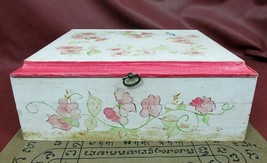 Alice Rutledge's Rose Quartz Sex Magic Box Main Healing Altar Find Voodoo Estate added to cart.
Only one available in stock
Alice Rutledge's Rose Quartz Sex Magic Box Main Healing Altar Find Voodoo Estate added to cart.
Only one available in stock
View Cart or continue shopping.
 Please wait while we finish adding this item to your cart.
Please wait while we finish adding this item to your cart.
Get an item reminder
We'll email you a link to your item now and follow up with a single reminder (if you'd like one). That's it! No spam, no hassle.
Already have an account?
Log in and add this item to your wish list.



